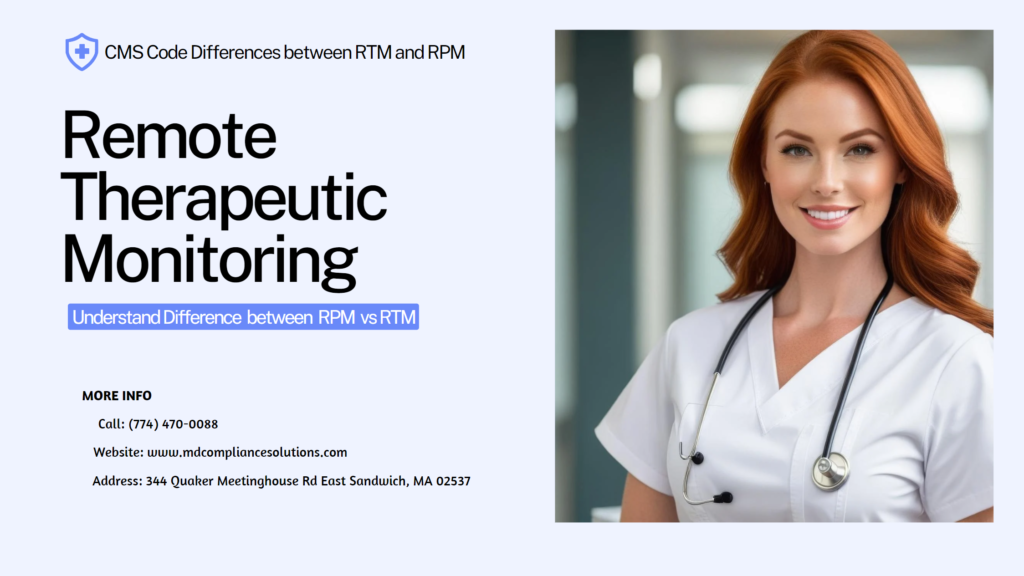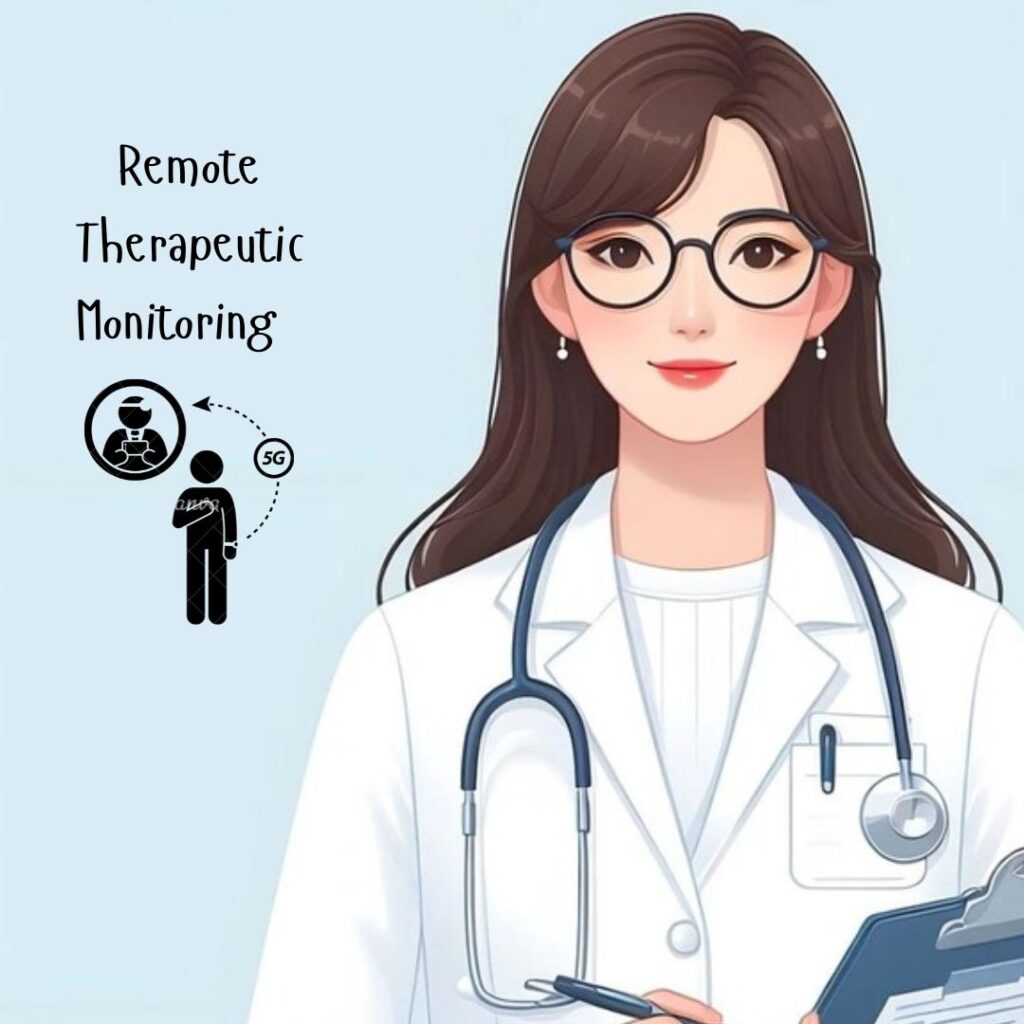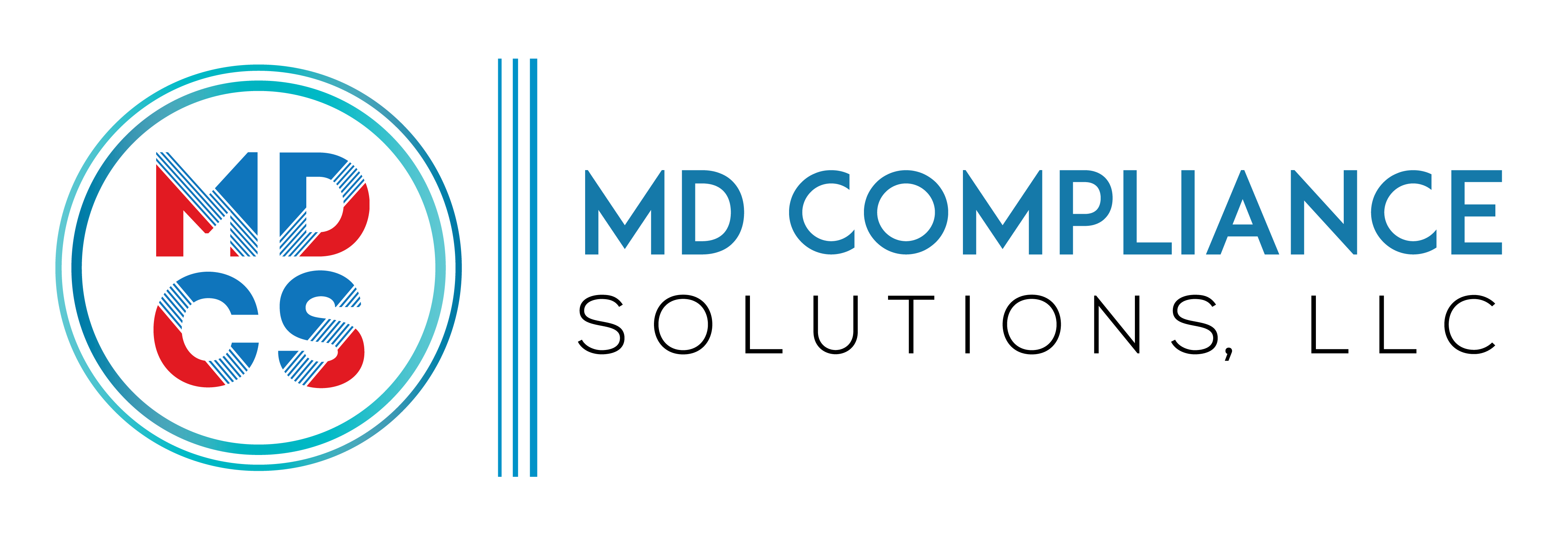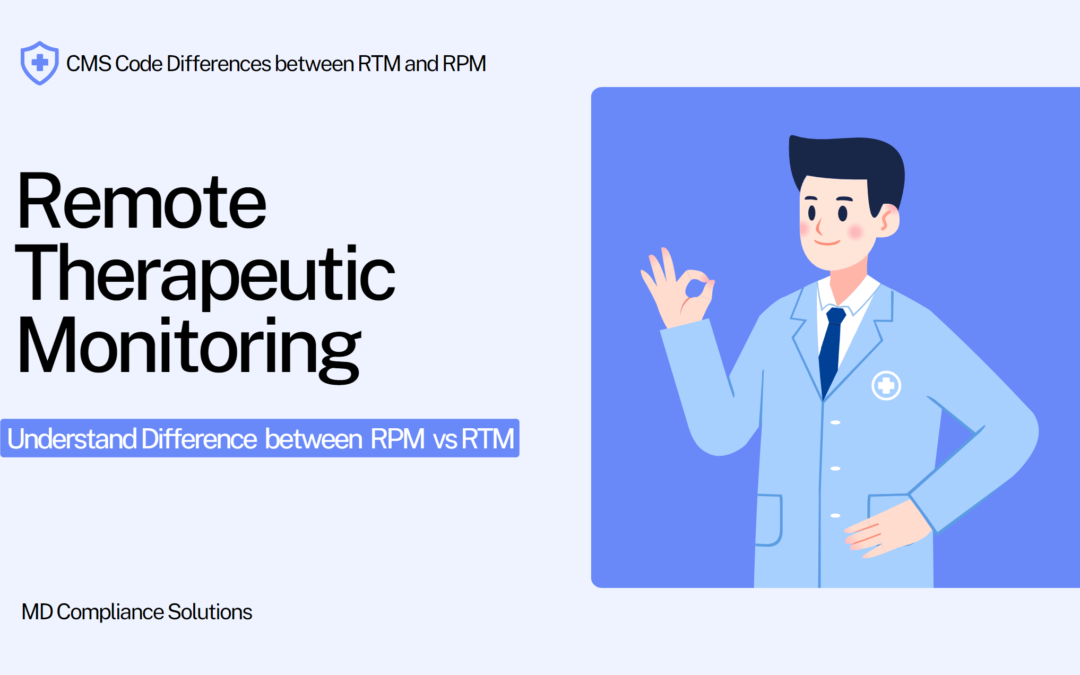Table of Contents
Remote Therapeutic Monitoring (RTM) is the process of remotely recording patient health data and employing technology to provide frequent monitoring and therapeutic treatments. New technologies are being introduced into the healthcare industry on a regular basis. The digital health industry is growing rapidly, as a result of innovative technologies, which is leading to an increase in the use of remote monitoring.
If you look back, you will see that for a number of years, remote patient monitoring, or PMD, has been used in healthcare settings. It enables medical professionals and non-medical practitioners to monitor distant patients with long-term illnesses. In order to enhance patient outcomes, boost income, and gather more accurate data, remote therapeutic monitoring, or RTM, can be particularly helpful in rehab treatment clinics.
Non-physiological data can be monitored remotely using advanced technology, including musculoskeletal and respiratory system data, pain levels, patient adherence, and reaction to therapeutic intervention or drugs. Remote treatment monitoring data can be automatically collected, stored, and transmitted. Patients may also report data to their providers.
Remote Therapeutic Monitoring is required to utilize a medical device that meets all of the FDA’s criteria. Physical therapists, occupational therapists, respiratory therapists, doctors, and physician assistants are all examples of “qualified healthcare providers” (QHPs).
There are five remote therapeutic monitoring codes. Four can be utilized for patients suffering from musculoskeletal disorders. RTM codes are referred to as general management codes. This means that practitioners, especially physical and occupational therapists, may charge these codes and deliver services.

Understand RPM?
Remote patient monitoring (RPM), sometimes referred to as remote physiologic monitoring. Remote patient monitoring is a technique for keeping an eye on patients from a distance. It differs from remote therapeutic monitoring (RTM) in a few ways. The information obtained must contain physiological data, such as heart rate, blood pressure, etc., in order to be billed under RPM codes. Patients’ manually entered data should not be included in the information that is automatically logged in.
Similar to remote therapeutic monitoring, patients can upload or self-report RTM. By employing RTM to treat patients with unstable housing, transportation needs, utility issues, or interpersonal safety, PTs can target a population segment that is frequently disregarded and forgotten while also saving money for patients, payers, and themselves. Another huge step forward in the direction of value-based care for the healthcare community!
Further, RPM and RPM must both employ technology that satisfies the requirements to be classified as medical devices. Often referred to as Evaluation and Management (E/M) codes, we are unable to bill for these with occupational and physical therapists since they are not permitted to do so.
Difference between RPM vs. RTM
In those tough times, only very few people have been fortunate enough to escape the COVID-19 epidemic, which caused everyone to reevaluate the type and caliber of healthcare services that can be provided at home. In this evolving era, remote patient monitoring, or RPM, has grown in popularity. We need to talk about the key distinctions between RTM and RPM and how each could address issues for the needs of your particular patient group. By automating the process of sending care recommendations and home exercises to patients following their initial appointment, RTM can help reduce stress in a number of ways.
Functional Difference
Remote therapeutic monitoring, first described by the American Medical Association (AMA), is the practice of keeping an eye on patients in between rehab therapy visits by means of a digital medical device and technology-based services.
Through the use of the latest technology, RPM allows a doctor to follow a patient from a distance and receive data back. Depending on the best option for that patient and circumstance, this can occur in real-time or at predetermined intervals of time. With remote therapeutic monitoring, clinicians can also keep an eye on patients from a distance (RTM).
Remote patient monitoring, on the other hand, places a strong emphasis on the patient’s “therapy response” and “adherence” in relation to the state of their respiratory and musculoskeletal systems. Examining “non-physiologic data” is more appropriate in this case. Its main function is to track non-physiological patient data, which allows physicians, physician assistants, and therapists to keep a close check on patients’ health and make necessary modifications to patient care.
In addition to monitoring, clinical and therapeutic interventions are also included in the RTM vs. RPM comparison. Healthcare professionals need to know which code set is most appropriate for their patient demographic because each has therapeutic applications. RTM solutions offer physical therapists and patients a number of advantages, i.e., cost effectiveness, enhanced patient engagement, improved accessibility, and boost efficiency.
Challenges of RTM for Therapists
Although there are many advantages to remote therapeutic monitoring (RTM), individuals who are not familiar with the field of remote therapeutic care may encounter difficulties. This is not intended to frighten you! By taking the right steps, these difficulties can be handled successfully. To be clear, doctors should continue to pursue remote monitoring technology and virtual physical treatment solutions despite these possible obstacles. Here are few challenges you should keep in mind.
- For sensitive health information to be protected, secure platforms and adherence to best practices for data privacy are essential. This issue is not unique to remote monitoring services because medical practitioners should already be safeguarding patient data, but it is nevertheless important to mention.
- For the implementation to be effective, patients and physical therapists must receive the necessary training to use the technology that is essential to remote monitoring. Technological literacy can also help patients provide accurate reports.
- In order to sustain and enhance patient involvement and guarantee adherence to therapy protocols, it is imperative to engage in regular interactive conversation and provide feedback. Everyone benefits from increased patient adherence.
CMS Code Differences between RTM and RPM
Digital care tools include codes for RTM. They are employed to quantify non-physiological indicators that contribute to better patient outcomes. Remote Therapeutic Monitoring allows for the collection and charging of any non-physiological data that a medical device, including software that meets the definition of a medical device, is capable of gathering. For example, pain levels and medication adherence are two areas of patient physiological data that are highlighted quite well.
It appears that the RTM codes may cover a larger range of use cases when we examine and contrast them with RPM codes. They concentrate on medical issues like the state of the respiratory and musculoskeletal systems, therapy response, and adherence. This suggests that they also approve of the gathering of non-physiologic data. Patients have the ability to submit RTM data, which they can upload digitally into the system or physically type into a device. RPM codes, as previously stated, are evaluation/management codes that doctors or other licensed healthcare provider’s bills. Remember, RTM CPT codes, however, are codes for general medicine. RTM mainly focuses on the respiratory and musculoskeletal systems, in CMS cases.
Final Thoughts:
In conclusion, now digital healthcare solutions have taken center stage. Defining RTM as a way to gather information about patients’ adherence to and responses to treatment. RTM incorporates non-physiological data and emphasizes therapeutic actions to enhance remote monitoring. It is a supplement to RPM’s current function in monitoring physiological data. Understanding RTM vs. RPM is crucial for healthcare practitioners who wish to enhance patient care and reimbursement schemes as telemedicine continues to evolve.
Read More: Why You Should Hire a Medical Billing Outsourcing Company


